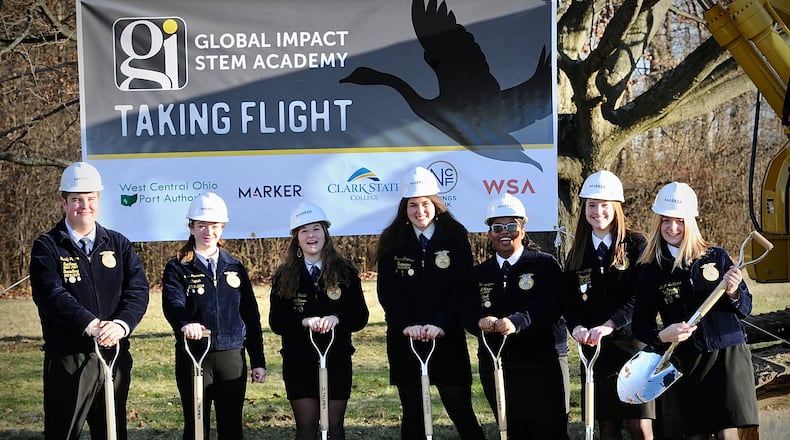Joshua Jennings, GISA superintendent, said during the groundbreaking ceremony the idea for the school on Clark State’s campus was born in March 2020 with the goal of providing GISA students greater access to college classes at Clark State and the opportunity to be on a college campus before graduation.
“This groundbreaking ceremony is not about the bricks and mortar; it’s about the future,” Jennings said. “We’re building together the future as you are shaping through your commitment to education.”
The total budget for the project, including all preconstruction services and soft costs, is $16,945,000. GISA will contribute $5,250,000 out of its general fund with the remaining $11,695,000 being financed through New Carlisle Federal Savings Bank, and $1,750,000.00 supported by cash collateral from unnamed philanthropic partners.
The new facility has a target completion date of July 2025.
It will include an entry plaza; an administrative suite with a reception area, four private offices, nurses station with two faculty restrooms, conference room, guidance suite with three private counselor offices and a waiting room, kitchenette and seating area; central commons area; outdoor patio; bus and parent drop off; expanded parking lot (which has 17 spaces but will have 60 in the future); building services core with a large storage room, restrooms, water and electrical room.
It will also have academic spaces such as biochemistry and environmental science labs, which are supported by a prep room between them; art room with its own kiln room; chemistry and physical science labs, also supported by a collaborative prep room; food science room; an ag lab and patio with a garage door; a delivery dock, greenhouse; and general classroom.
Clark State provided the land for the new facility and additional space on the campus for Global Impact programming and classes.
The facility will be the first high school on a college campus in Ohio, said Horton Hobbs, GISA governing board president and vice president of economic development with the Greater Springfield Partnership.
“It’s so exciting standing in front of you today on the cusp of breaking ground in an area that will forever change the face of education in this community,” Hobbs said during the ceremony.
Clark State President Jo Alice Blondin said GISA students participate the most of any high school in the College Credit Plus dual enrollment program. She said 54 GISA students last year earned an associate’s degree before finishing high school.
“I think the biggest compliment I’ve gotten today is that we are a willing partner, and we are,” Blondin said. “We appreciate this partnership more than you know.”
State Rep. Bernie Willis said that the facility will be a showcase for education to the state and nation.
“So once again Springfield gets to be that shining star that is moving forward and being No. 1 at things that most people wouldn’t even think that we could,” Willis said.
The academy is currently accepting applications for the 2024-25 school year, with applications due Jan. 12, at www.globalimpactacademy.org/page/enrollment-and-admission. A parent Q&A session will be held Jan. 9 in the John Legend Theater. There will be a lottery held on Jan. 26 if there are more applicants than spots available.
About the Author

